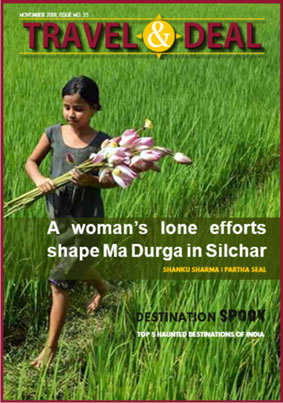Delectable food and celebrations are not the only definitions of festivals. Clyde D’mello asserts how MONTI FEST helps in strengthening family bonds.
It’s September 8 and in the little town of Mangalore in Karnataka, preparations have started for a glorious celebration of the mother. Catholics get ready to go the church to celebrate this divine day and at the end of the mass, the priest gives the family a ‘NOVEM’ or rice paddy which stated by the name is ‘NEW’ or the first crop of the season, for the triumph that will soon take place i.e. the coming of Christ.
Monti fest or Mother Mary’s feast celebrates the Nativity of the Virgin Mary, and as we remember Christmas where a ‘Crib’ is made to signify the birth of Christ, here the feast has a single baby wrapped lying on a pile of hay with paddy seeds behind her. The Festival is native to Mangalore and was started by Fr. Joachim Miranda,a Goan priest during 1763 from Firangipet (which is translated as Foreigners’ market) located in border Mangalore, from the church Monte Mariano Church or Mount Mary Church. It was the time when Tipu Sultan was destroying and vandalizing most of the Konkan Catholic civilization (Goa Maharashtra and Karnataka), and this was one of the few churches that he didn’t touch due to the priest and the sultans Fathers, Hyder Ali’s close ties.
The festival celebrates the first crop of the year and like other harvest festivals in India (a few names to put in are Onam {kerela}, Pongal {Tamil Nadu}, Lhori {Punjab} etc.).Along with the paddy, sugarcane is also given as a reminder of the new life (Christ) who will soon come – ‘within the following months’ to children who bring flowers to the church.
It is a family event where all the members sit together and eat , though people have kept history at bay we need to thank Tipu Sultan for not destroying this church for among other reasons.This festival is now a national ‘thing’ as well as international, for many Magaloreans who basically live in the Persian Gulf this festival reminds them of their roots.
To a certain extent the food prepared is surprisingly ‘vegetarian’ (technically speaking most Christian are Non- Vegetarians by habit and Vegetarians by Choice). The Festival acts a reminder that Konkan Christians (Catholics) wherever they are, being Indian they were also Hindus at a certain point of time and due to the conversion or inter- marriage (Anglo Indians), bought in by the Portuguese (for a better life). The festival also reminds them of the pain that the Konkans have been through during the reign of Tipu Slutan , his 15 yr captivity that caused a near extinction of the community gives them pride that they have survived and carried on, and as ‘God’ would say ‘go forth and multiply’.
The food preparation starts from the ‘NOVEM’ that is blessed in the church at the altar by the priest and collected by the head of the family. After a sort prayer at any Mangalorean home, food is prepared by the ladies of the house (this can also suggest a patriarchal society), the menu includes a variety of dishes and a standard ingredient in these dishes is the Coconut.
The food is served on a banana Leaf and at the end of lunch a sweet dish is served (Vorn- made of Jaggery, Daal (lentils), coconut milk and Novem and garnished with cardamom). It is here where the NOVEM is added, that probably gives it a ‘Prasada’ feeling (or sweets given by priests after the end of a prayer or pooja) which incidentally happens also here not by priest but by prayer led by the head of the family.
There are atleast nine dishes prepared and eaten to the fullest
- Allu Dentte (colocaesia leave with mangalorean masala with spinach stems)
- Karate (bitter gourd – which is prepared in a paste form with grated coconuts and masala)
- Ladies finger (fried)
- Dry brown gram that is slightly sweetish.
- A dish made of long string beans.
- Tendli or Ivy Gourd, with grated coconuts and chilli.
- A curry made of sponge guard
- Pathorode or colocaesia leaves made with rice batter and steamed after that mangalore masala is added to make a dry curryAnd of course Vorn
On a more personal note to me, being a Mangalorean,this festival brings families together, it is the process of sharing responsibility among the family and that is where the fun lies in this festival, this is also a way for relatives to know other members and friends of the family that seem to be vanished or are “too busy to call” and for the younger generation to know how tight a family bond is.

